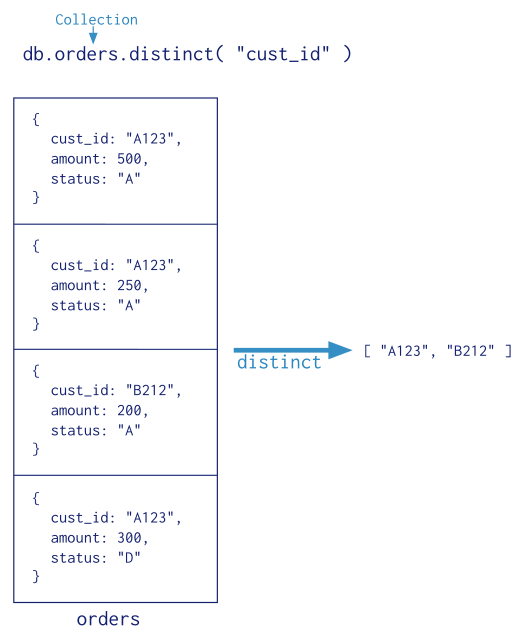- Aggregation >
- Aggregation Concepts >
- Single Purpose Aggregation Operations
Single Purpose Aggregation Operations¶
Aggregation refers to a broad class of data manipulation operations that compute a result based on an input and a specific procedure. MongoDB provides a number of aggregation operations that perform specific aggregation operations on a set of data.
Although limited in scope, particularly compared to the aggregation pipeline and map-reduce, these operations provide straightforward semantics for common data processing options.
Count¶
MongoDB can return a count of the number of documents that match a
query. The count command as well as the
count() and cursor.count() methods
provide access to counts in the mongo shell.
Example
Given a collection named records with only the following
documents:
The following operation would count all documents in the collection
and return the number 4:
The following operation will count only the documents where the
value of the field a is 1 and return 3:
Distinct¶
The distinct operation takes a number of documents that match a query
and returns all of the unique values for a field in the matching documents.
The distinct command and db.collection.distinct() method provide
this operation in the mongo shell. Consider the following examples of a distinct operation:

Example
Given a collection named records with only the following
documents:
Consider the following db.collection.distinct()
operation which returns the distinct values of the field b:
The results of this operation would resemble:
Group¶
The group operation takes a number of documents that match a query, and then collects groups of documents based on the value of a field or fields. It returns an array of documents with computed results for each group of documents.
Access the grouping functionality via the group command
or the db.collection.group() method in the mongo
shell.
Warning
group does not support data in sharded
collections. In addition, the results of the group
operation must be no larger than 16 megabytes.
Consider the following group operation:
Example
Given a collection named records with the following documents:
Consider the following group operation which groups documents by the
field a, where a is less than 3, and sums the field count for each group:
The results of this group operation would resemble the following:
See also
The $group for related functionality in the
aggregation pipeline.